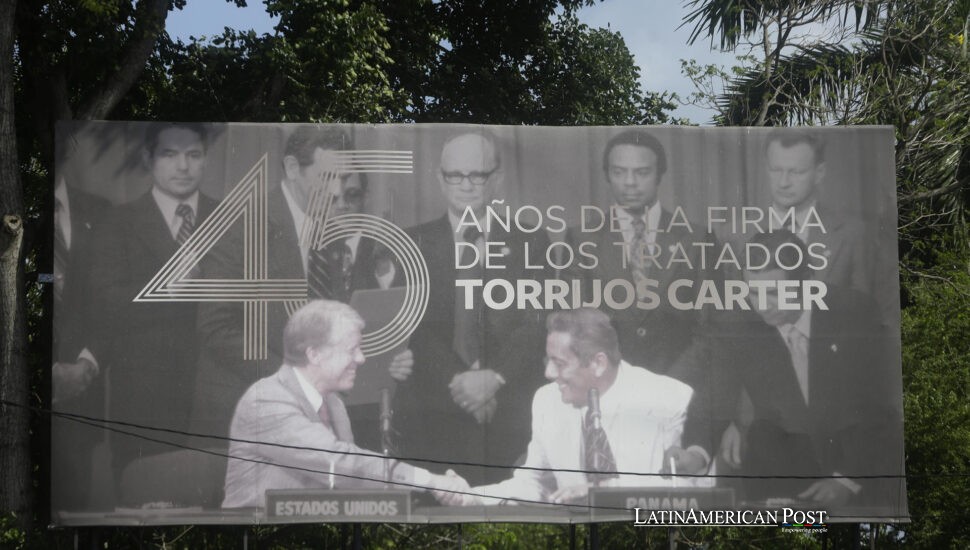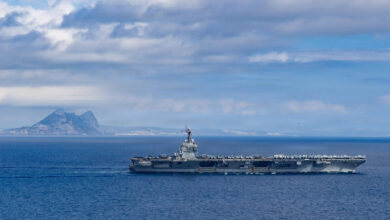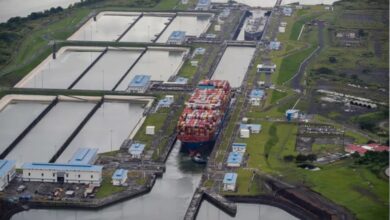Tiger and Mule Symbolize Panama’s Endless Canal Struggle in New Documentary

When Donald Trump brazenly declared earlier this year his intent to “take back” the Panama Canal, a new documentary in Panamanian theaters was already working to remind audiences of the fraught diplomacy, negotiations, and ultimate return of the Canal’s sovereignty.
A Documentary Born of Renewed Threats and Forgotten History
U.S. President Donald Trump created concern in Panama in early 2023 when he claimed that he would work to “recover” the Panama Canal. Trump’s comments revived memories of past political control over the strategic Panama Canal, which led to renewed discussions about national pride and historical sacrifices for Panamanian control.
Around the same time, Panamanian director Annie Canavaggio was unveiling her documentary, Hijo de Tigre y Mula, which delves into the complex maneuvering that preceded the 1977 Torrijos-Carter Treaties. These agreements, bearing the names of Panamanian leader General Omar Torrijos and U.S. President Jimmy Carter, transferred sovereignty of the Canal to Panama by the end of the twentieth century.
The film’s release proved remarkably timely. In an interview with EFE, Canavaggio recalled that she originally began the project seven years ago as an educational tool for young Panamanians—many of whom, she says, have little sense of the uphill struggle that won them the Canal. “My main motivation was the youth,” she explained. “They always felt as though the Canal had always been ours, without realizing there was a fight to achieve this territory.”
Trump’s comments accelerated the final stages of the film’s production and prompted Canavaggio to ensure its swift release. “We can’t allow anyone—inside or outside Panama—to trivialize the monumental efforts of Omar Torrijos and so many others who negotiated our sovereignty,” she said.
Hijo de Tigre y Mula runs 105 minutes and methodically examines the historical odyssey leading to the treaties that officially ended the United States administration of the waterway, which had been in place since the Canal’s inauguration in 1914. This film tells a story of diplomacy. It also highlights the importance of remembrance, the risks in forgetting along with the great part the Canal has for Panama’s country image plus finances.
Educating a New Generation of Panamanians
A key concern of Canavaggio’s is the evident gap in Panamanian classrooms where the nation’s relationship with the United States once featured prominently in the curriculum. “It felt to me that a piece of history was disappearing—specifically the legacy of Omar Torrijos and all that went into those 1977 treaties,” the director told EFE.
In Panama, a course called Historia de las Relaciones Panamá-EE.UU has long existed but has been repeatedly removed and reinstated in school syllabi by successive governments. Most recently, as political tensions over the Canal reignited, Panama’s president declared the subject mandatory once again. For years, however, many students never received a thorough exploration of the protracted negotiations and civil movements that culminated in Panamanian sovereignty.
“That’s why, in a sense, there hasn’t been a forgetting—it’s that many simply never knew,” Canavaggio said. This dearth of knowledge shows up in surprising ways. Young people often assume the Canal was always part of Panama—unaware of the painful decades in which entire zones were effectively U.S.-administered enclaves, and Panamanians themselves were denied free movement in those areas.
By synthesizing vivid, archival footage—from Omar Torrijos’ 1968 coup d’état through the fateful plane crash that ended his life in 1981, Hijo de Tigre y Mula offers a vivid crash course for new generations. From a purely educational standpoint, the documentary’s growing popularity is evident: it spent more than four weeks in theaters with robust ticket sales, and it was among the most-attended films at the International Film Festival of Panama (IFF) in early April.
Now, Canavaggio hopes to expand its reach to streaming platforms such as Netflix or Amazon Prime. She often receives requests from schools, communities, and cultural organizations eager to screen the film. “I’m open to showing it everywhere,” she said. “There’s a tremendous demand, and I wish I could bring it to every corner faster.”
A Leader Caught Between a Tiger’s Guile and a Mule’s Stubbornness
Hijo de Tigre y Mula opens by quoting Nobel Laureate Gabriel García Márquez, who famously described General Omar Torrijos as a cross between a tiger and a mule: the tiger bestowing him “precise cunning,” the mule gifting him “unlimited tenacity.” It’s a colorful yet apt metaphor for a figure who believed wholeheartedly in the Panamanian cause but recognized the necessity of calculated leverage when confronting the United States.
Canavaggio depicts Torrijos as a master strategist, or, in her words, an adept chess player, a skill sharpened by his parents, who taught him to think several moves ahead. “He managed to build up his negotiating power,” Canavaggio told EFE. “He forged connections with prominent world leaders, sought their backing, and then earned the trust of everyday Panamanians. Meanwhile, he sent the U.S. a clear message: ‘If you don’t give us the Canal, there will be consequences.'”
Such consequences famously included a series of bombings—14 in total—to demonstrate that Panamanian sentiment about the Canal was no idle matter. While the film does not glorify violence, it underscores how tension shaped the negotiations, proving that Panama would no longer quietly acquiesce to external control of its most crucial national resource.
Using only real footage, Hijo de Tigre y Mula recreates a pivotal era, from Torrijos’ rise to power in the late 1960s to the intense period of international diplomacy in the 1970s, culminating in the signing of the Torrijos-Carter Treaties in 1977. The documentary also situates these developments in the broader Latin American context, where many saw Torrijos as a champion of regional autonomy.
Viewers get an intimate look at a leader who not only unified Panamanians behind a singular vision—recovery of the Canal—but also deftly navigated Cold War politics and the global stage. When his plane tragically crashed in 1981 near his beloved Coclesito, it marked the end of a monumental chapter in Panamanian politics. The turnover happened on December 31, 1999. It honored the promise of Torrijos that the Canal would go back to those to whom it rightfully belonged.
The film talks with historians, political experts, and people who took part in the talks, showing the substantial nature of the treaties. Many experts regard them as one of the most significant diplomatic feats in modern Latin American history. That spirit of resilience and self-determination courses through Canavaggio’s film, inviting audiences to question how much they truly know—and how much they still need to learn—about this watershed moment.
For the director, Torrijos’ chess-like approach to politics remains a potent lesson for today’s leaders, especially those underestimating Panamanians’ commitment to their sovereignty. “He was playing two games at once,” Canavaggio noted, “one with the people, ensuring their unity and willingness to push forward, and another with the U.S., letting them see what would happen if they refused to give Panama its due.”
The current unease caused by Trump’s direct statements shows the documentary’s popularity reflects a shared need to remember the period of decisive talks and firm resolve. This period protected the Canal. By presenting those narratives again, Hijo de Tigre y Mula confirms the search for self-rule remained a difficult goal for Panama, a defining aspect of the country’s national honor. Such a search did not have a certain outcome.
Also Read: Titanic’s Overlooked Stories of Latin American Tragedy
Today, as the Canal remains a linchpin of global commerce, it is more important than ever for Panamanians and international observers alike to understand the history behind this interoceanic marvel. For many viewers, Annie Canavaggio’s documentary does precisely that: it reminds them that behind every treaty clause and handshake lies the perseverance, cunning, and spirit of a man part tiger, part mule, who refused to bow to forces greater than himself.




